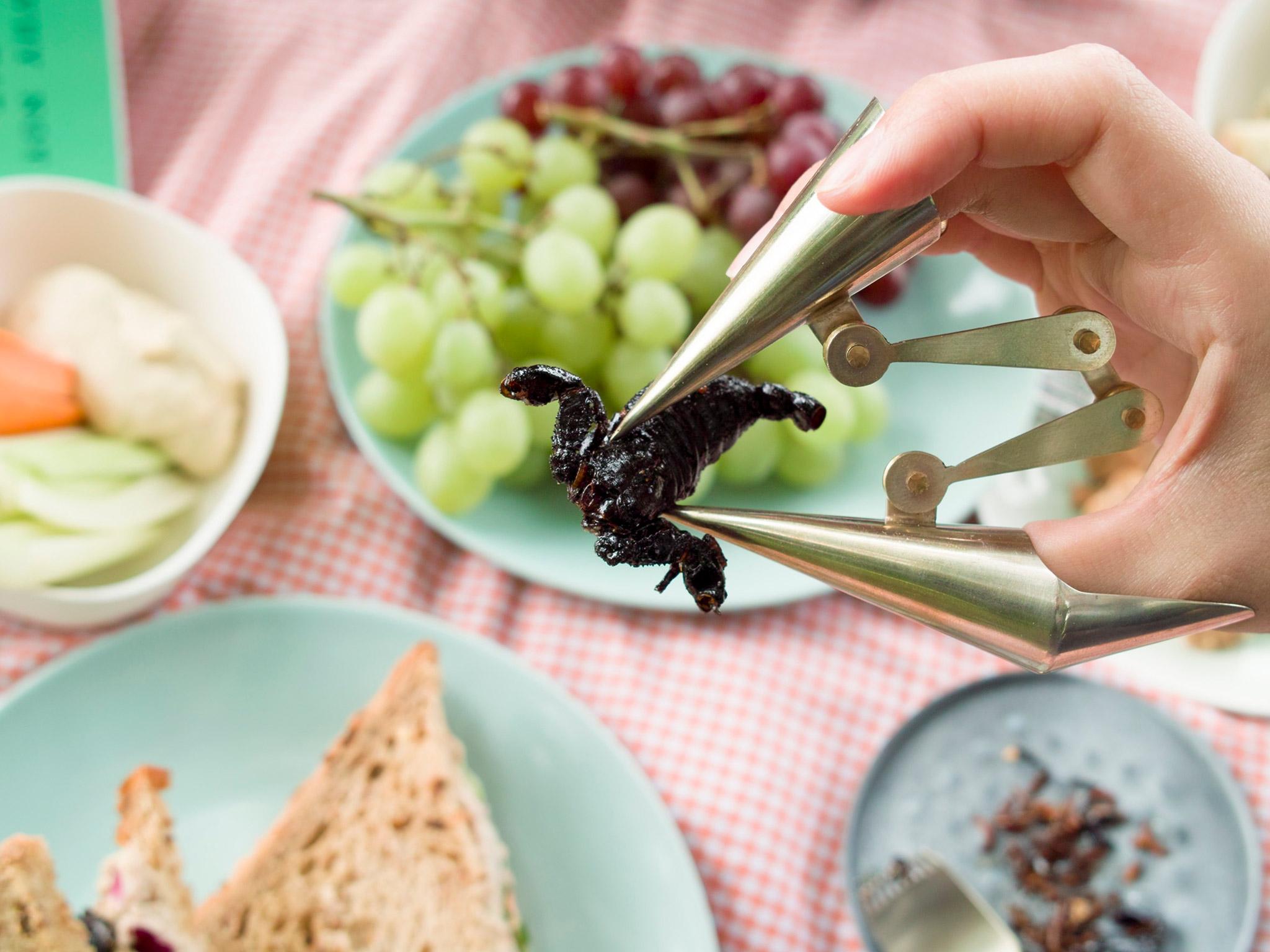The bug-eating kit that may help humanity survive future global food shortages
The world's population is set to hit nine billion by 2050, and bugs might have to be on the menu for us to survive

Your support helps us to tell the story
From reproductive rights to climate change to Big Tech, The Independent is on the ground when the story is developing. Whether it's investigating the financials of Elon Musk's pro-Trump PAC or producing our latest documentary, 'The A Word', which shines a light on the American women fighting for reproductive rights, we know how important it is to parse out the facts from the messaging.
At such a critical moment in US history, we need reporters on the ground. Your donation allows us to keep sending journalists to speak to both sides of the story.
The Independent is trusted by Americans across the entire political spectrum. And unlike many other quality news outlets, we choose not to lock Americans out of our reporting and analysis with paywalls. We believe quality journalism should be available to everyone, paid for by those who can afford it.
Your support makes all the difference.If the thought of eating a witchetty grub or a scorpion makes your skin crawl then you might need to get used to the thought pretty sharpish, at least according to some experts.
By 2050, the population of the world is expected to hit 9 billion people. And that’s a lot of mouths to feed. Experts believe we will have to turn more and more to entomophagy, or using insects as food, in order to sustain humanity.
The diets in high-income countries filled with meat, which are being replicated in low and middle-income countries, doesn’t seem sustainable considering the toll it takes on the environment and on our health.
And when you consider that snails are a delicacy in nations including France, people in Thailand already happily tuck into grasshoppers and crickets, and not much separates a prawn from a scorpion, then it all seems a lot more palatable. (Sort of).
There are also health benefits to tucking into creepy crawlies. There are around 27g of protein per 100 grams, but between 35 to 48g in chapuline grasshoppers. And insects take up a lot less room than bigger livestock, like chicken, cows and pigs. In addition, most countries have access to or can import edible insects, with countries including Australia, China, and Mexico having a particularly large variety already available.
Designer Kobayashi Wataru is offering a small solution to the problem of making insects seem palatable for cultures where they aren’t yet widely eaten which his creation BugBug utensils. The range, which isn’t available in shops, includes especially designed chopsticks, a spork for picking up bugs, and a set of claws which slide over the fingers and help when eating bugs like crisps. He won UCL’s Institute of Making 'Cutlery Design Challenge' with his design last year.
But he says that people who have interacted with his project haven’t been entirely convinced to ditch their chicken for insects. Not yet, at least.
“I saw a girl covered her mouth while she was looking at the BUGBUG project,” he says of an incident when he was showing his work at the New Designers festival in London last year.
“Some people have said it’s interesting or that it’s scary. And other people just said 'sorry I’m vegetarian'."
At the same time, his work has also sparked debate. People have been surprisingly accepting, he says.
"At Designersblock as part of London Design Festival, a Mexican lady told me they eat insects in her country already. Another Italian guy told me some Italian people ate cats long time ago in Venice.”
“If Western people and those in developed countries eat bugs, it might be possible to balance food resources across the world. Of course it wouldn’t be enough to only eat insects, as we have to reduce food wastes as well.”
Those who are keen to get stuck in, he adds, shouldn’t attempt to eat bugs without doing some research beforehand.
“If someone have an allergy for seashells, the might hav the allergy from eating insects. Raw insects are also dangerous. So insects are not perfect foods. But if people don’t have allergy, they are worth trying. They taste good and they are nutritious. They just look bad. But if they were cheap and convenient to get, I would buy and eat them in my daily life. I’ve eaten grasshopper, mealworms, buffalo worms and crickets for my project.”
He says he was inspired by ancient objects like stone axes and hand tools, as well as cutlery used to snap open crabs and scoop the flesh from snails.
“Entomophagy is one of the most difficult food plans to be adopted in society because nobody takes eating bugs seriously in daily life.”
“I’d like to change the perception people have so they accept insects as meals in the future because we don’t have a lot of time until 2050.”
Join our commenting forum
Join thought-provoking conversations, follow other Independent readers and see their replies
Comments